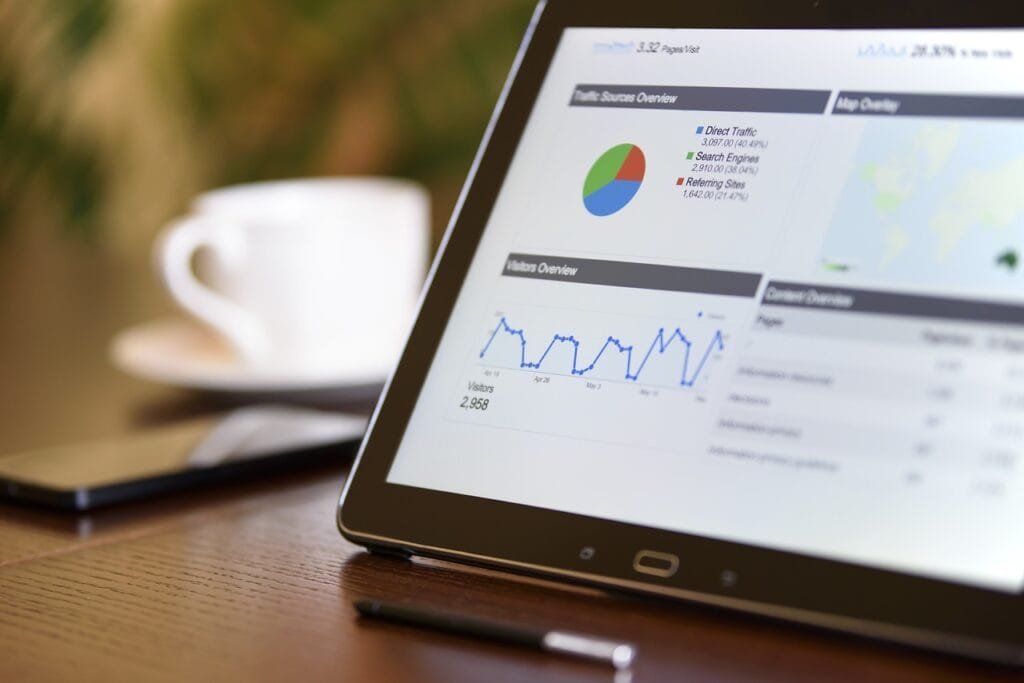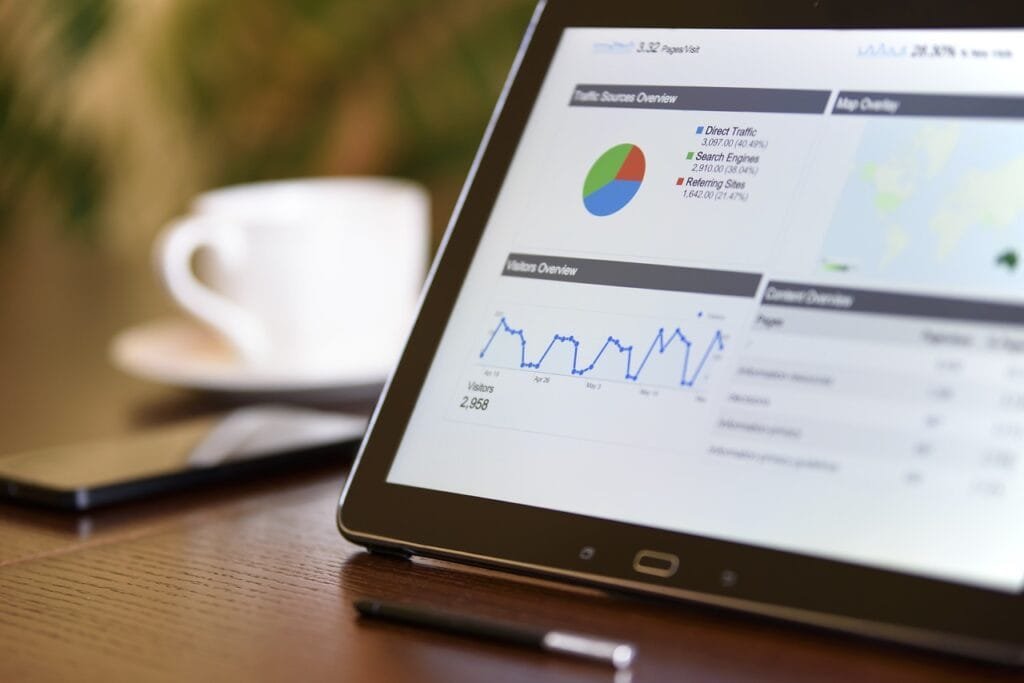This Article has been revised, edited and added to, by Poulomi Chakraborty.
- The Rise of Regional Sustainable Products
- Local Sustainability Matters
- Supporting Local Economies
- Reducing Carbon Footprints
- Authenticity and Transparency
- Capitalizing on Consumer Demand for Eco-Friendly Options
- Innovating to Meet Sustainability Standards
- Developing Partnerships with Local Suppliers and Artisans
- Leveraging Technology for Enhanced Customer Experience
- Engaging with Community Initiatives
- The Power of Geotargeting
- Geotargeting Strategies for Regional Sustainable Products
- Cultivating Sustainable Growth through Localized Marketing
- Additional Tips and Strategies for Effective Geotargeting
- Implement Local Schema Markup
- Leverage Online Directories
- Explore Google Ads Location Extensions
- Create Location-Specific Content
- Optimize for Mobile Devices
- Use Geotargeted Email Marketing
- Engage with Local Communities
- Monitor Competitor Geotargeting
- Consider Hyperlocal Targeting
- Measure Offline Conversions
- Realizing the Potential of Geotargeting
- Navigating Regional Success with Geotargeting
- Conclusion
In today’s global marketplace, where sustainability is no longer a trend but a way of life, regional sustainable products are gaining prominence. These are goods that are not only eco-friendly but also locally sourced or produced, reducing carbon footprints and supporting local economies. If you’re a business that specializes in regional sustainable products, you’re on the right side of history. However, how can you ensure that your target audience, the eco-conscious local consumers, discover and embrace your offerings in a world flooded with options? The answer lies in geotargeting strategies.
Geotargeting is a digital marketing approach that focuses on delivering tailored content and advertisements to specific geographic regions. It allows you to reach the right people at the right place and time. In this comprehensive guide, we will explore geotargeting strategies tailored to regional sustainable product businesses. We’ll delve into the intricacies of using geotargeting to enhance your local SEO, drive foot traffic, and build a loyal customer base right in your region.
The Rise of Regional Sustainable Products

Before we dive into geotargeting strategies, let’s take a moment to understand why regional sustainable products are becoming increasingly important and why your business is in a unique position to thrive.
Local Sustainability Matters
The global awareness of environmental issues is at an all-time high. People are concerned about climate change, pollution, and the depletion of natural resources. They want to make a difference, and one way to do that is by choosing sustainable products.
Supporting Local Economies
Regional sustainable products not only contribute to a greener planet but also support local economies. When consumers buy locally sourced or produced goods, they bolster their communities by creating jobs and fostering economic growth.
Reducing Carbon Footprints
Local products typically travel shorter distances, reducing the carbon emissions associated with transportation. This aligns perfectly with the eco-conscious consumer’s desire to reduce their carbon footprint.
Authenticity and Transparency
Consumers today value transparency and authenticity. They want to know where their products come from and how they’re made. Regional sustainable products often come with compelling origin stories that resonate with consumers.
Capitalizing on Consumer Demand for Eco-Friendly Options
As the market for sustainable goods continues to expand, startup founders have the unique opportunity to capitalize on the growing consumer demand for eco-friendly products. The key is not just to offer sustainable options but to effectively communicate the environmental benefits and the ethical sourcing of these products.
Founders should focus on developing comprehensive marketing strategies that highlight the tangible impacts of purchasing these goods, such as the reduction in environmental degradation and the support for local biodiversity.
Engaging storytelling that connects consumers emotionally to the product’s origin and the sustainability journey can significantly enhance consumer interest and loyalty.
Innovating to Meet Sustainability Standards
Innovation is essential for startups looking to make a mark in the regional sustainable products market. This could involve using new, less resource-intensive materials, adopting energy-efficient production methods, or innovating in the supply chain to reduce carbon emissions.
For startup founders, staying ahead of technological advancements and sustainability trends can provide a competitive edge. Moreover, securing certifications such as organic, fair-trade, or carbon-neutral can substantiate the startup’s claims about its products, adding a layer of trust and authenticity that is highly valued by today’s consumers.
Developing Partnerships with Local Suppliers and Artisans
For businesses specializing in regional sustainable products, developing strong partnerships with local suppliers and artisans is crucial. These partnerships ensure a consistent supply of locally sourced materials and goods, which not only supports the local economy but also reduces transportation emissions.
Founders should look for suppliers who adhere to sustainable practices themselves, creating a fully sustainable supply chain that can be a major selling point. Additionally, collaborations with local artisans can lead to unique product offerings that differentiate the brand in a crowded marketplace.
Leveraging Technology for Enhanced Customer Experience
Technology can play a pivotal role in connecting consumers with regional sustainable products. Startups can leverage augmented reality (AR) to provide virtual product experiences or use blockchain for enhanced transparency regarding product origins and sustainability credentials.
Such technological integrations can enhance the customer experience, making it easier for consumers to make informed decisions about their purchases. Additionally, technology can streamline operations, reduce costs, and improve the overall efficiency of the business, further contributing to its sustainability goals.
Engaging with Community Initiatives
Engagement with community sustainability initiatives can significantly enhance a brand’s visibility and credibility. Startups can sponsor local environmental clean-ups or educational programs, or engage in partnerships with local schools to promote environmental awareness.
This not only strengthens the community’s perception of the brand but also actively contributes to local sustainability efforts. By becoming a community leader in sustainability, a startup can build a strong, loyal customer base that supports the brand not just for its products but for its impact on the community and environment.
The Power of Geotargeting

Now that we’ve established the significance of regional sustainable products, let’s explore how geotargeting can be your secret weapon to connect with local consumers.
Geotargeting Defined
Geotargeting is a digital marketing technique that delivers content, advertisements, and promotions based on a user’s location. It relies on various technologies like GPS, IP addresses, and Wi-Fi networks to determine a user’s geographical position.
Why Geotargeting Matters for Local Businesses
For businesses that thrive on local and regional customers, geotargeting offers several advantages:
- Precision: Geotargeting allows you to reach consumers in specific neighborhoods or regions, ensuring that your marketing efforts are highly relevant.
- Cost Efficiency: You can allocate your marketing budget more efficiently by targeting only the areas where your potential customers are located.
- Personalization: Tailored messages resonate more with consumers. Geotargeting enables you to personalize content based on local interests, events, and trends.
- Local SEO Boost: Local search engine optimization (SEO) is critical for businesses that rely on foot traffic. Geotargeted campaigns can significantly improve your local search rankings.
- Increased Foot Traffic: If you have physical stores or venues, geotargeting can drive foot traffic by alerting nearby consumers to your presence.
Integrating Advanced Analytics for Precision Targeting
For startups focusing on regional sustainable products, the use of advanced analytics can significantly enhance the precision of geotargeting strategies. By analyzing data on consumer behavior, demographics, and purchasing patterns within specific geographic areas, startups can tailor their marketing messages more effectively.
This approach allows for the creation of highly targeted campaigns that resonate with the local audience’s specific preferences and needs. Leveraging tools like geographic information systems (GIS) and customer relationship management (CRM) platforms can help refine these strategies, ensuring that marketing efforts are not only localized but also highly relevant and engaging.
Customizing User Experience Based on Location
Customizing the user experience on digital platforms based on the user’s location can significantly increase engagement and conversion rates. This can be implemented on websites and mobile apps by adjusting content, promotions, and special offers to reflect local events, holidays, or consumer preferences.
For example, if a significant local event is happening, a startup could offer special promotions that tie into the event, thereby increasing relevance and interest. Such localization not only enhances the consumer experience but also strengthens the connection between the brand and its local customers.
Optimizing Local Search Engine Marketing
Search engine marketing (SEM) can be localized to increase its effectiveness. Startups should consider creating geographically specific ad campaigns that target potential customers in different regions. This involves using local keywords and phrases that are likely to be used by people in those areas.
Additionally, leveraging local extensions and local inventory ads on platforms like Google Ads can drive higher traffic both online and offline. These targeted campaigns ensure that marketing spend is optimized for the highest return, focusing on areas with the highest potential for customer engagement and sales.
Building Local Link Networks
Developing a network of local links is an essential strategy for enhancing local SEO and establishing regional credibility. Startups can engage with local bloggers, media outlets, and other businesses to create content partnerships that result in mutual backlinking.
Hosting or sponsoring local events can also generate local media coverage and online mentions, which serve as valuable backlinks to the startup’s website. These local links not only improve SEO but also help in building a strong local presence that can drive organic traffic and increase brand awareness in the community.
Harnessing the Power of Mobile Geotargeting
With the increasing use of smartphones for internet access, mobile geotargeting has become a crucial tool for reaching consumers. Startups can use mobile-specific strategies such as SMS marketing, in-app advertisements, and mobile search ads to reach customers who are on the move.
These strategies can be particularly effective in driving foot traffic to local stores by sending timely promotions and discounts when potential customers are nearby. Additionally, the integration of location-based services within mobile apps can provide users with personalized information and offers based on their immediate geographical location.

Related: Check out our free SEO suite

Geotargeting Strategies for Regional Sustainable Products
Optimize Your Google My Business (GMB) Listing
A well-optimized GMB listing is the foundation of local SEO and geotargeting. Ensure that your GMB profile is complete and accurate with up-to-date information about your regional sustainable products, including your location, hours of operation, and contact details.
Create Localized Landing Pages
Develop localized landing pages on your website that highlight your regional sustainable products and their relevance to specific regions. Use local keywords and phrases that resonate with consumers in each targeted area.
Leverage Location-Based Keywords
Incorporate location-based keywords into your website’s content, product descriptions, and blog posts. These keywords should reflect the regions you want to target. For example, if you sell locally sourced organic fruits, use phrases like “organic fruits in [City Name].”
Run Geotargeted Social Media Ads
Social media platforms like Facebook and Instagram offer geotargeting options for advertising. Create compelling ads that showcase your regional sustainable products and use geotargeting to reach users in your target regions.
Engage with Local Influencers
Identify local influencers or bloggers who align with your sustainability values. Collaborate with them to promote your regional sustainable products to their local followers. Influencers can provide authentic endorsements that resonate with their audience.
Participate in Local Events
Attend or sponsor local events related to sustainability, environmental causes, or regional products. These events provide opportunities to connect with your local audience and raise awareness about your offerings.
Offer Geofencing Discounts
Implement geofencing marketing campaigns to offer discounts or promotions to users who are within proximity to your physical store or event venue. Geofencing can be a powerful tool to drive foot traffic and conversions.
Encourage Reviews and Ratings
Ask satisfied customers to leave reviews and ratings on platforms like Google, Yelp, and TripAdvisor. Positive reviews from local customers can boost your local SEO and credibility.
Monitor Local Search Trends
Stay informed about local search trends and consumer preferences in your target regions. Tools like Google Trends can help you identify popular search queries related to sustainability and regional products.
Measure and Adjust
Regularly analyze the performance of your geotargeting efforts using tools like Google Analytics and social media insights. Measure key metrics such as website traffic, click-through rates on ads, and conversions. Use the data to refine your geotargeting strategies over time.
Cultivating Sustainable Growth through Localized Marketing

Geotargeting strategies are not just about reaching a broad audience; they’re about connecting with the people who matter most to your regional sustainable product business—the local consumers who share your values and aspirations for a greener, more sustainable future.
As you embark on your geotargeting journey, remember that it’s a dynamic process that requires ongoing optimization and adaptation. Consumer behaviors change, local trends evolve, and your business can grow stronger by staying agile and responsive.
Establishing Strong Local Brand Identity
For startups focusing on regional sustainable products, establishing a strong local brand identity is crucial. This involves crafting a brand image and narrative that resonate deeply with local culture, values, and aspirations.
By integrating local symbols, dialects, and imagery into branding materials, startups can foster a sense of community inclusion and pride. This local branding strategy should be consistently applied across all marketing channels, from the storefront to digital platforms, ensuring that the brand is perceived as an integral part of the local landscape.
Implementing Community-Centric Marketing Initiatives
Community-centric marketing initiatives can significantly enhance a startup’s visibility and credibility within a local area. Startups should consider launching campaigns that address local issues or contribute to community projects.
This could include sponsoring local sports teams, participating in community clean-ups, or supporting local arts and culture. By showing commitment to the welfare of the community, startups not only boost their brand image but also create meaningful connections with potential customers who value civic engagement.
Leveraging Data-Driven Insights for Local Market Penetration
Data-driven marketing is essential for understanding and penetrating local markets effectively. Startups should invest in analytics tools to gather data on local consumer behaviors, preferences, and feedback.
This information can be used to tailor products, services, and marketing messages that meet the specific needs and desires of the local population. For example, if data shows a strong interest in organic products among local consumers, a startup can highlight its organic certifications and farm-to-table processes in its marketing efforts.
Fostering Local Partnerships for Wider Reach
Partnering with other local businesses can lead to synergistic effects in marketing efforts. Startups should look for partnership opportunities with non-competing businesses that share a similar target audience.
Joint promotions, bundled offers, or co-hosted events are effective ways to reach a wider audience while sharing the costs of marketing initiatives. Such partnerships not only increase the reach but also enhance the reputation of the startup through association with established local businesses.
Enhancing Customer Experience with Local Personalization
Personalizing the customer experience can make a significant difference in attracting and retaining customers. This can include personalized communications, tailored offers, and local customer service that understands and speaks to local nuances.
For instance, ensuring that customer service representatives are knowledgeable about local issues and can communicate in the local dialect can greatly improve customer relations. Additionally, creating in-store experiences that reflect local tastes and cultures can increase the likelihood of repeat visits and recommendations.
By adopting these strategies, startups can effectively navigate the complexities of local markets and drive sustainable growth. Establishing a strong local brand identity, engaging in community-centric initiatives, leveraging data-driven insights, fostering local partnerships, and enhancing personalized customer experiences are all crucial steps in building a successful local presence for regional sustainable products.
These strategies not only help in achieving immediate marketing goals but also lay the foundation for long-term success and community integration.
Additional Tips and Strategies for Effective Geotargeting

In the world of geotargeting for regional sustainable products, success lies in the details. Let’s delve deeper into additional tips and strategies that will further enhance your geotargeting efforts:
Implement Local Schema Markup
Schema markup is a code you can add to your website to provide search engines with additional information about your business. Implementing local schema markup helps search engines understand your location and the products or services you offer in specific regions. This can improve your chances of appearing in local search results and rich snippets.
Leverage Online Directories
Ensure that your business is listed in relevant online directories and local business listings. This not only boosts your online presence but also provides valuable citations, which are mentions of your business’s name, address, and phone number (NAP), contributing to your local SEO.
Explore Google Ads Location Extensions
If you’re running Google Ads campaigns, consider using location extensions. These extensions display your business address, phone number, and a map marker alongside your ads. When users click on the extension, they get directions to your business. This feature is particularly useful for businesses with physical stores or venues.
Create Location-Specific Content
Craft content that speaks directly to the concerns, interests, and values of consumers in different regions. This can include blog posts, articles, or social media updates that highlight the local aspects of your regional sustainable products. Localized content helps you establish a deeper connection with your audience.
Optimize for Mobile Devices
Mobile optimization is crucial for geotargeting strategies, as many users conduct local searches on their smartphones. Ensure that your website is responsive and loads quickly on mobile devices. Also, make it easy for mobile users to find essential information such as your location and contact details.
Use Geotargeted Email Marketing
Segment your email marketing list based on location and send geotargeted emails. These emails can include location-specific promotions, event announcements, or updates about regional product availability. Geotargeting your emails ensures that you’re delivering relevant content to recipients.
Engage with Local Communities
Participate actively in local online communities and forums. Share your expertise, answer questions, and contribute valuable insights related to sustainability and regional products. This engagement not only builds your online reputation but also establishes you as a trusted local resource.
Monitor Competitor Geotargeting
Keep an eye on how your competitors are using geotargeting strategies. Analyze their approaches, keywords, and messaging in different regions. This can provide valuable insights and help you identify opportunities to differentiate your brand.
Consider Hyperlocal Targeting
Hyperlocal targeting focuses on reaching consumers within a very specific radius, such as a few blocks or a single neighborhood. If your regional sustainable products cater to a hyperlocal audience, this strategy can be highly effective in driving foot traffic to your physical store or venue.
Measure Offline Conversions
If you have physical stores or venues, implement tracking methods to measure the impact of your geotargeting efforts on offline conversions. For example, you can use store visit tracking in Google Ads to understand how online interactions lead to in-store visits and purchases.
Realizing the Potential of Geotargeting

Effective geotargeting strategies are like a compass that guides your regional sustainable product business toward local success. By aligning your marketing efforts with the specific needs and preferences of your target regions, you create a more meaningful and lasting connection with local consumers.
Remember that geotargeting is not a one-size-fits-all solution. It requires continuous monitoring, analysis, and adaptation to stay in tune with changing consumer behaviors and market dynamics.
Enhancing Visibility with Dynamic Content Delivery
To maximize the impact of geotargeting, startups should consider implementing dynamic content delivery systems on their digital platforms. This technology adjusts the content a user sees based on their geographic location, time zone, or even local weather conditions.
For instance, a startup could showcase heavier coats and winter gear to customers in colder regions while promoting lighter clothing options to those in warmer areas. Similarly, special promotions or products related to local festivals or events can be highlighted to visitors from specific locales.
This approach not only increases relevance and engagement but also boosts conversion rates by presenting the most pertinent offerings to each user.
Utilizing Predictive Analytics for Proactive Marketing
Predictive analytics can transform how startups anticipate and meet the needs of local markets. By analyzing historical data and current market trends, startups can predict future buying behaviors and preferences at a regional level.
This foresight allows for the proactive adjustment of marketing strategies and inventory management, ensuring that supply always meets demand. Moreover, predictive models can identify potential new markets or suggest the optimal times for promotional campaigns, helping startups stay one step ahead in a competitive landscape.
Expanding Reach with Cross-Channel Marketing
To fully leverage geotargeting, startups should employ a cross-channel marketing approach. This involves synchronizing marketing messages across multiple channels such as social media, email, mobile apps, and offline advertising to create a cohesive and omnipresent brand experience.
By aligning the messaging and timing of these campaigns with local events or seasonal trends, startups can significantly enhance their visibility and impact. For example, a social media ad campaign about a local sustainability event can be complemented by emails to local subscribers and in-store promotions, creating multiple touchpoints with potential customers.
Developing Localized Mobile Apps
For startups that rely heavily on digital engagement, developing a localized mobile app can provide a competitive edge. These apps can offer functionalities like in-store navigation, local event calendars, and location-based discounts, enhancing the user experience and fostering local loyalty.
Push notifications can be used to alert users about nearby store events or flash sales based on their current location, increasing foot traffic and spontaneous purchases. An app also provides valuable data on user behavior and preferences, which can be used to further refine marketing and product strategies.
Building Community Through Localized Social Media Strategies
Social media platforms offer powerful tools for geotargeting, particularly through localized content and community building. Startups should focus on creating region-specific social media pages or groups that cater to the interests and needs of local communities.
Engaging content that features local landmarks, celebrates local heroes, or discusses regional issues can foster a strong sense of community and brand loyalty. Regular interaction, such as responding to comments or featuring customer stories, enhances engagement and encourages word-of-mouth marketing, which is invaluable for regional growth.
Navigating Regional Success with Geotargeting
As we reach to and end of our in-depth exploration of geotargeting strategies for regional sustainable products, it’s essential to recognize that you’re on a remarkable journey—one that combines sustainability, community, and digital marketing prowess. Your commitment to providing eco-conscious consumers with locally sourced and produced goods is commendable, and geotargeting is your vehicle to drive local success.
Here’s a quick recap of the key takeaways from our discussion:
- Regional Sustainable Products Matter: The rise of sustainability awareness, the support for local economies, and the reduction of carbon footprints make regional sustainable products increasingly important in today’s world.
- The Power of Geotargeting: Geotargeting is a dynamic digital marketing strategy that allows you to connect with local consumers effectively. It enhances local SEO, personalizes your messaging, and drives foot traffic to your physical locations.
- Geotargeting Strategies: We explored a range of actionable geotargeting strategies, from optimizing Google My Business listings to engaging with local influencers and offering geofencing discounts. These strategies empower you to reach the right people in the right places.
- Case Study: We examined a fictional case study of “Green Eats Co.,” a regional food delivery service, to illustrate how geotargeting strategies can yield significant results. By implementing these strategies, Green Eats Co. improved its online presence and attracted local customers.
- Additional Tips and Strategies: We provided further insights, such as implementing local schema markup, leveraging online directories, and using geotargeted email marketing, to enhance your geotargeting efforts.
Conclusion
In conclusion, the strategic application of geotargeting presents a transformative opportunity for businesses specializing in regional sustainable products. By fine-tuning marketing efforts to align with the unique characteristics and needs of local audiences, startups can significantly enhance their market penetration and brand loyalty. This approach not only optimizes resource allocation but also deepens consumer relationships through personalized interactions and community involvement.
As the digital landscape evolves, the agility to adapt and innovate within geotargeting will be crucial. Success lies in the continuous monitoring and refining of strategies to keep pace with both technological advancements and changing consumer behaviors. Embracing these challenges and opportunities, startups can look forward to thriving in their local markets, contributing positively to regional economies, and promoting a sustainable future.
Read Next




















